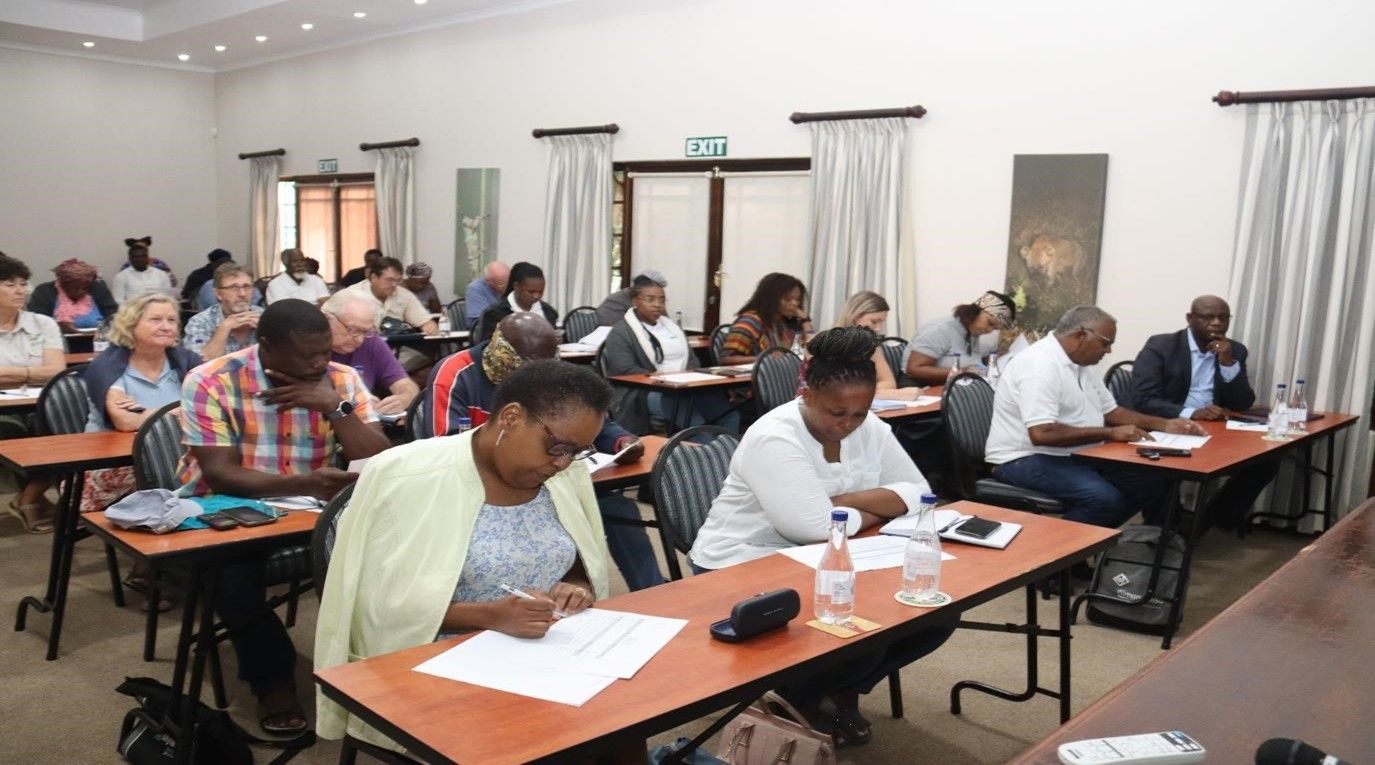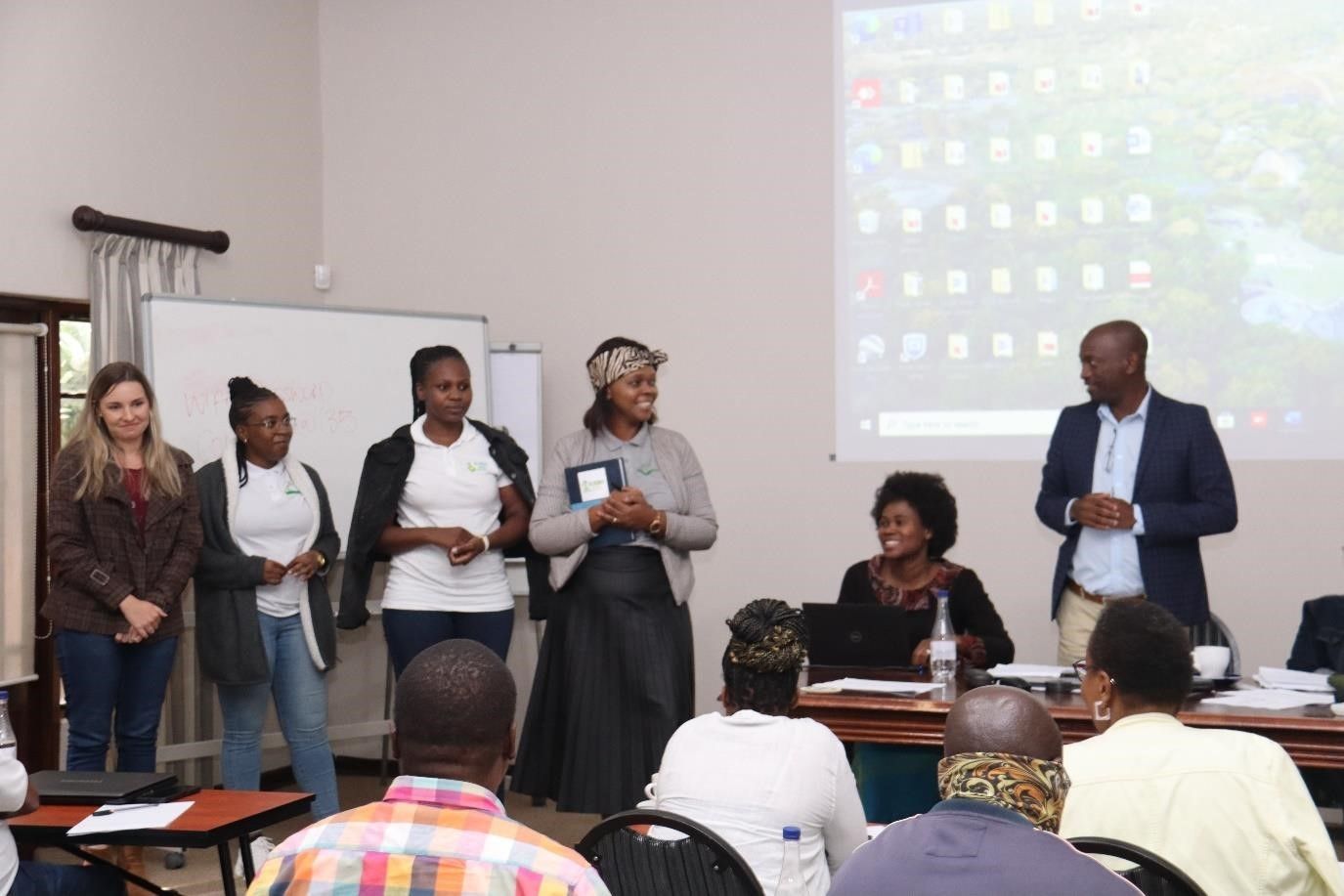
Stakeholders Appreciates the Progress Made in Resolving the Issue of the St. Lucia Estuarine System
02 May 2023

Dr Riaan Cedras explained that iSimangaliso notified the department (DFFE) of the above events and associated effects and requested to undertake the following activities:
-
Excavation of a channel to a base level of 0msl (mean sea level) with a base width of 7.5m and side slopes of 1 in 1 (gradient) to drain down the back flooded waters within a reasonable time.
-
The most suitable excavation method is the excavation of the beach channel (1.2 km in length) using excavators and amphibious dredger and the lower Msunduzi river (2.3km) blockage using a specialized multi-purposed dredger called an amphibious dredger with a cutter and suction head.
-
TheclearanceofabeachchannelandthelowerMsunduziusingthecombined methods of an excavator and the specialized multi-purpose machinery would take a minimum timeframe of 6.5 months to be completed as of the date of the Umfolozi Sugar Planters proposal dated October 2022.
-
Theintentionofthefarmershoweverisfortheprojectimplementationtoallow them to be ready to replant in September 2023 this means if the timeframe of 6.5 months provided by the farmers is considered, this intervention needs to commence immediately or as soon as possible.
Dr Cedras also reported that the outcome of the NEMA 30A legislation application was further denied on the 3rd of April 2023 on the basis of the following:
-
The proposed measures will require the procurement of equipment, specifically the specialized amphibious dredge. Details on its availability were not available at the time of receipt of the Section 30A directive request and it is envisaged that approvals for procurement will be required and will further delay the implementation of proposed interventions and actions.
-
On Site surveys of the subject area are required to be able to identify and assess potential impacts and this will be finalized once the appropriate engineering team has been appointed and is on site to conduct the necessary assessments and provide technical details of how the proposed work will be undertaken. As no clear timelines are available at this point in time, the appointment of the team and specialist may cause further delays with the implementation of the said activities.
-
The 26 250sqm vegetation which is proposed to be cleared within the critical biodiversity area and the 86 300cm3 of the sediment to be removed are estimates. No information has been provided indicating the proposed mitigation for the impact associated with the proposed intervention, the method to be used for the removal of sediments from site or where the sediments will be disposed of. The impact of this on the system, system functionality, and overall impact on the surrounding environment has not been established. This is regarded as fundamental information required before a directive in terms of section 30A can be favourably considered.
Dr Riaan also stated that the solutions to mitigate the impact on the environment to maintain the environmental integrity of lake St Lucia estuarine system, in terms of forecast, and the monitoring of suspended sediment yields into the St Lucia estuary system. This will assist iSimangaliso to do the monitoring and management of the dredging process which will enable iSimangaliso to take timely decisions and implement adaptive and corrective measures for the maintenance of a free-flow river channel.
Following the refusal of the Section 30A, the next approach is to conduct a Basic Assessment and the public participation process, which must be carried out and concluded within next three months. iSimangaliso must appoint the specialist who will work with the appointed Environmental Consultants in delivering at least 4 assessments being the Geotechnical/Engineer to assess the hydraulic performance and the ecological circumstance in the catchment system, Sedimentologist to study the constituents, textures, structures, and content of the deposits in order to identify the best approach to dredging and mitigating post-dredging impacts, the Vegetation/wetland specialist to document how removing excess sediment and alien vegetation impacted hydrology and plant assemblages both prior and post excavation, the Social-ecologist must be included to assess the impact and adverse effects on the social users and include the Marine biologist who will assess the abundance, diversity and biomass of key marine taxa in relation to environmental parameters.
The St Lucia estuary stakeholder meetings are held quarterly and attended by various stakeholders. The next meeting is set to be held in June 2023.
End
Statement issued by iSimangaliso Wetland Park Authority
Media enquires contact:
Mr Bheki Manzini
Call/WhatsApp: 060 533 2082
Email:
